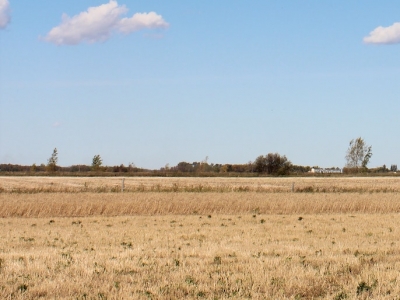By Paloma Raggo and Bob Wyatt
Photos by Jay Mullings
Granted, it was hard to foresee that the world would shut down, borders close, and economic activity come to a virtual standstill. Still, this wasn’t the first time that the charitable sector was confronted with a large-scale crisis like the COVID-19 pandemic. The SARS epidemic and the threat of an avian flu epidemic should have given us some idea of what a health emergency might look like. The 2008 economic collapse of the housing market and the subsequent financial turmoil should have highlighted the imperative of creating an emergency-preparedness plan. Charitable organizations and their boards of governance are often portrayed as the front-line responders to national emergencies. But what if an emergency challenges the existence of an organization on top of everything else? What’s a charitable organization to do?
 Prepare for the worst and hope for the best
Prepare for the worst and hope for the best
Plan, plan, plan. Plan for everything, from your building burning down to your CEO winning the lottery or leaving without notice. The pandemic has reminded us of the importance of technological literacy and access. Board members reluctant to meet over Zoom have been thrown into the abyss of remote technology. But why did it take a pandemic for people in the charitable sector to update their ways? Organizations could have considered the necessity of e-voting, remote meetings and virtual document sharing before the crisis, and the transition for many could have been much smoother. An emergency-preparedness plan has to include provisions in governing documents to allow such provisions and ensure the plan’s consistency with the law under which the organization is incorporated.
The board is the boss
It’s easy in turbulent times to over-rely on your organization’s top executive to steer you clear of a crisis. Traditional boards are set up to delegate daily concerns to their CEOs. That’s fine under normal conditions, but in a time of rapid change, the board must step in to support the CEO, give direction and, most importantly, ensure the organization’s accountability toward its constituents and mission, and protect its assets. Amidst chaos, board members can easily forget that they’re ultimately the ones legally liable for the organization’s actions. A pandemic isn’t an excuse to stop meetings, avoid contingency measures and neglect due diligence over organizational spending; the organization’s survival often depends on stable and consistent attention to governance.
 Take a breather and don’t overreact
Take a breather and don’t overreact
While it’s essential to be proactive in times of crisis, the lessons learned must not lead to a situation where an organization always operates in emergency mode. One day, the crisis will be over, but a new (and perhaps different) reality will emerge. Some measures, protocols and policies might be necessary to survive the crisis but not helpful in normal circumstances. For example, the board might need to meet more regularly during a crisis (definitely not less), but such frequency should not be enshrined. Meeting fatigue is a real thing that can lead to disengagement among board members.
Organizations are people too
Saving for a rainy day to lessen the effects of a crisis on an organization, we often forget about the people within and the impact of crises on them. Emergency-preparedness plans should anticipate and allow for difficult conversations about leadership changes, impacts on beneficiaries, responsibilities of board members, or the need for staff layoffs. Discussing the unthinkable, the death of the organization, is the required first step in planning and deserves a place in what-would-you-do scenarios.
These difficult times remind us that organizations are first about people: the people we serve, employ, and affect. Planning for governance emergencies ultimately protects those we care about.
Sign up for PANL Perspectives' free, monthly newsletter
Sunday, September 20, 2020 in COVID-19, Leadership & Governance
Share: Twitter, Facebook



